
China
12:58, 27-Dec-2017
Southern Shaolin’s kung fu monks battle for attention
By Sim Sim Wissgott and Zhu Danni
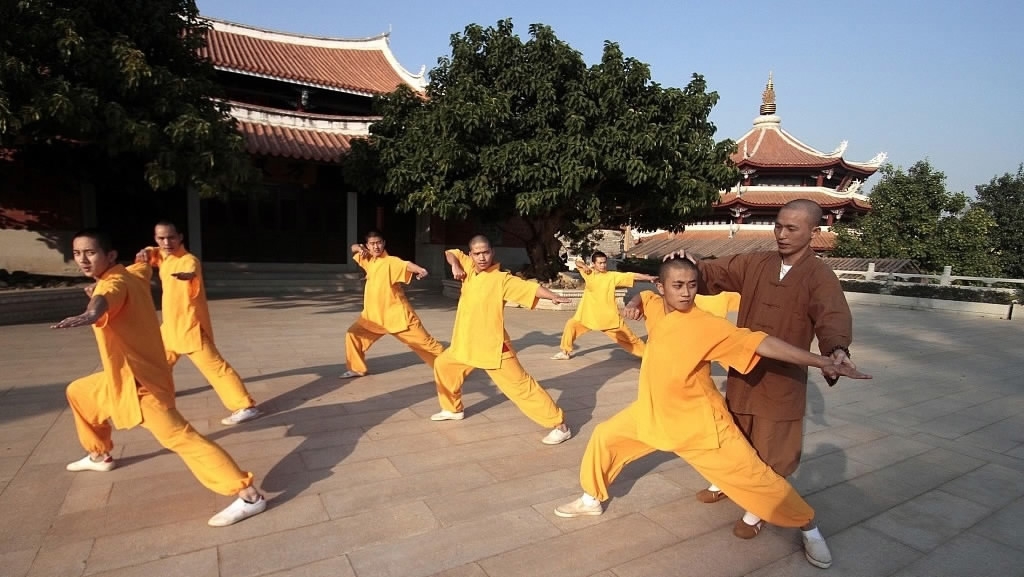
You’ve probably heard of Shaolin Temple, but did you know there’s more than one in China?
In Quanzhou, in southeastern Fujian Province, monks in saffron-colored robes practice kung fu moves in front of a few dozen tourists every day.
For Abbott Shi Changding, more needs to be done to attract people and get the word out about his temple.
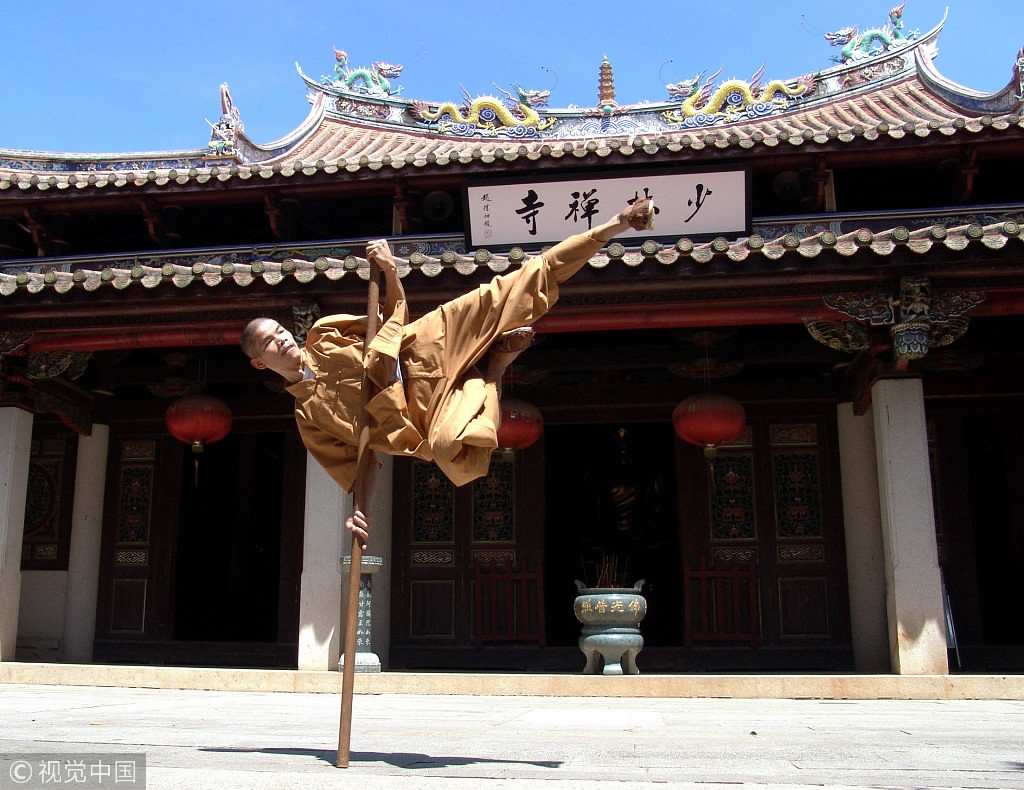
A monk performs martial arts at Southern Shaolin Temple in Quanzhou, China. /VCG Photo
A monk performs martial arts at Southern Shaolin Temple in Quanzhou, China. /VCG Photo
For many, the name Shaolin Temple immediately conjures up images of monks performing flying kicks and acrobatic tricks, as portrayed in countless movies. The temple most people know about is located in Henan Province in central China.
The origins of the Quanzhou version are more mysterious. Officially, it was established during the Tang Dynasty (618-907). Legend has it that monks from the northern Shaolin Temple came south to help fight pirates. Others say they fled the north at the fall of the Ming Dynasty in the 17th century.
At one point, there were said to be several Shaolin temples in China.
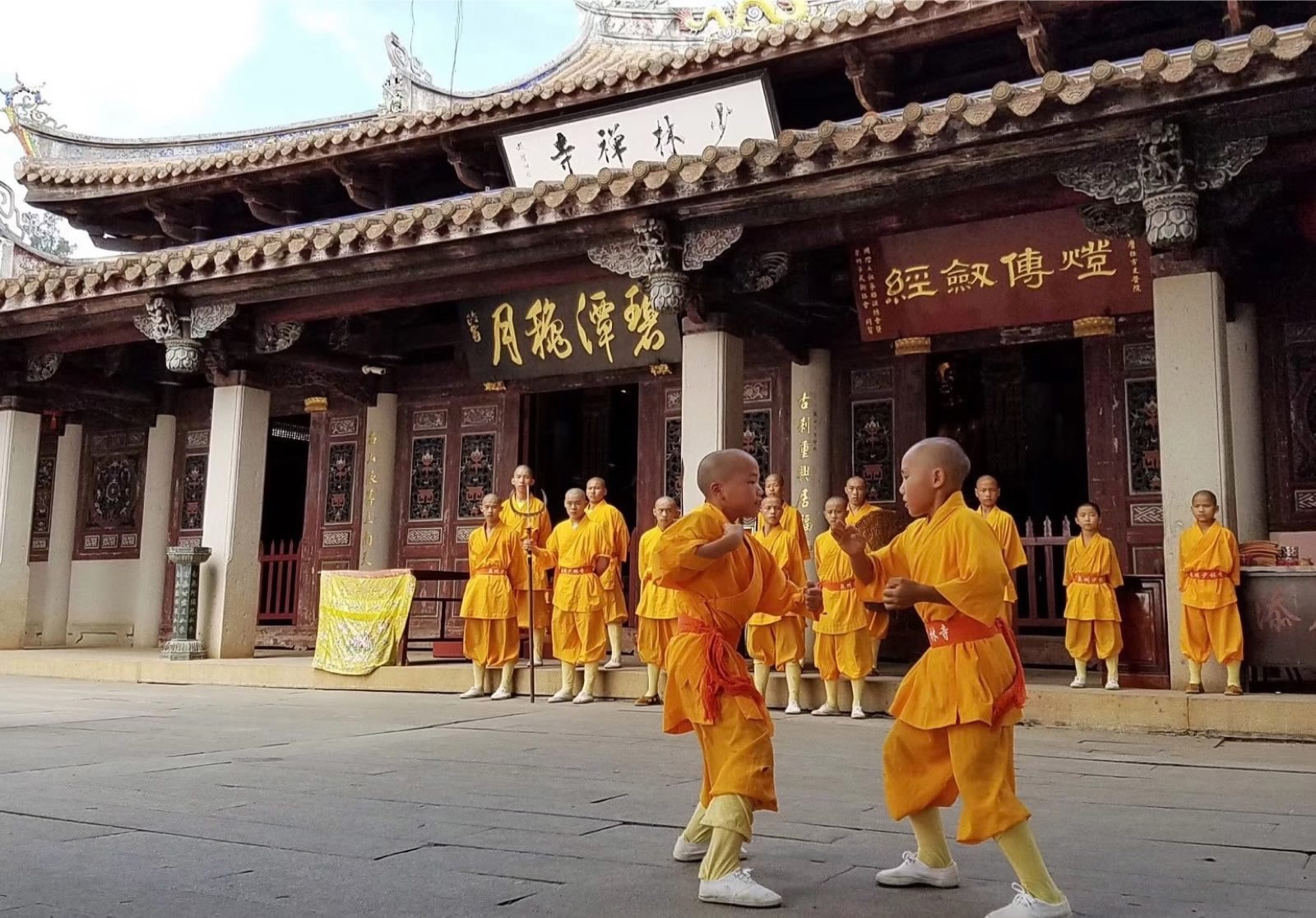
Young pupils spar at Southern Shaolin Temple in Quanzhou, China. /Southern Shaolin Temple Photo
Young pupils spar at Southern Shaolin Temple in Quanzhou, China. /Southern Shaolin Temple Photo
In any case, Southern Shaolin Temple was destroyed by fire in the late 18th century. It was not rebuilt until 1997 and now labels itself as the “birthplace of Southern Shaolin martial arts.”
Monks vs. pirates
Unlike other types of martial arts that are heavy on kicks and leg work, Southern Shaolin focuses much more on punches and arm movements.
This goes back to the Southern Shaolin monks’ history of fighting pirates. On unstable terrain, such as at sea or in mountainous areas, it was easier to battle opponents with feet firmly planted on the ground, rather than try to perform elaborate jumps and flying kicks.
The weapons used are based on similar thinking: a two-meter-long wooden staff could be used to strike opponents at a distance, such as from one boat to another.

A pupil shows off his martial arts skills at Southern Shaolin Temple in Quanzhou, China. /Southern Shaolin Temple Photo
A pupil shows off his martial arts skills at Southern Shaolin Temple in Quanzhou, China. /Southern Shaolin Temple Photo
The “pa” – a sort of curved trident with metal rings – and handball-sized “double hammers” that rattle could not only harm an opponent, but also ward off wild animals in the mountains by making noise.
Nowadays, Southern Shaolin martial arts are no longer used to fight off pirates, but the craft has spread far and wide, and can now be found in southeast China's island region of Taiwan, and southeast Asia and even the US.
PR and kung fu
At the temple in Quanzhou, pupils as young as six years old practice for up to six hours per day every day to master the skills to become a proper kung fu master.
But the learning actually never ends, says Shi Ligang, head of the wushu team at the temple.
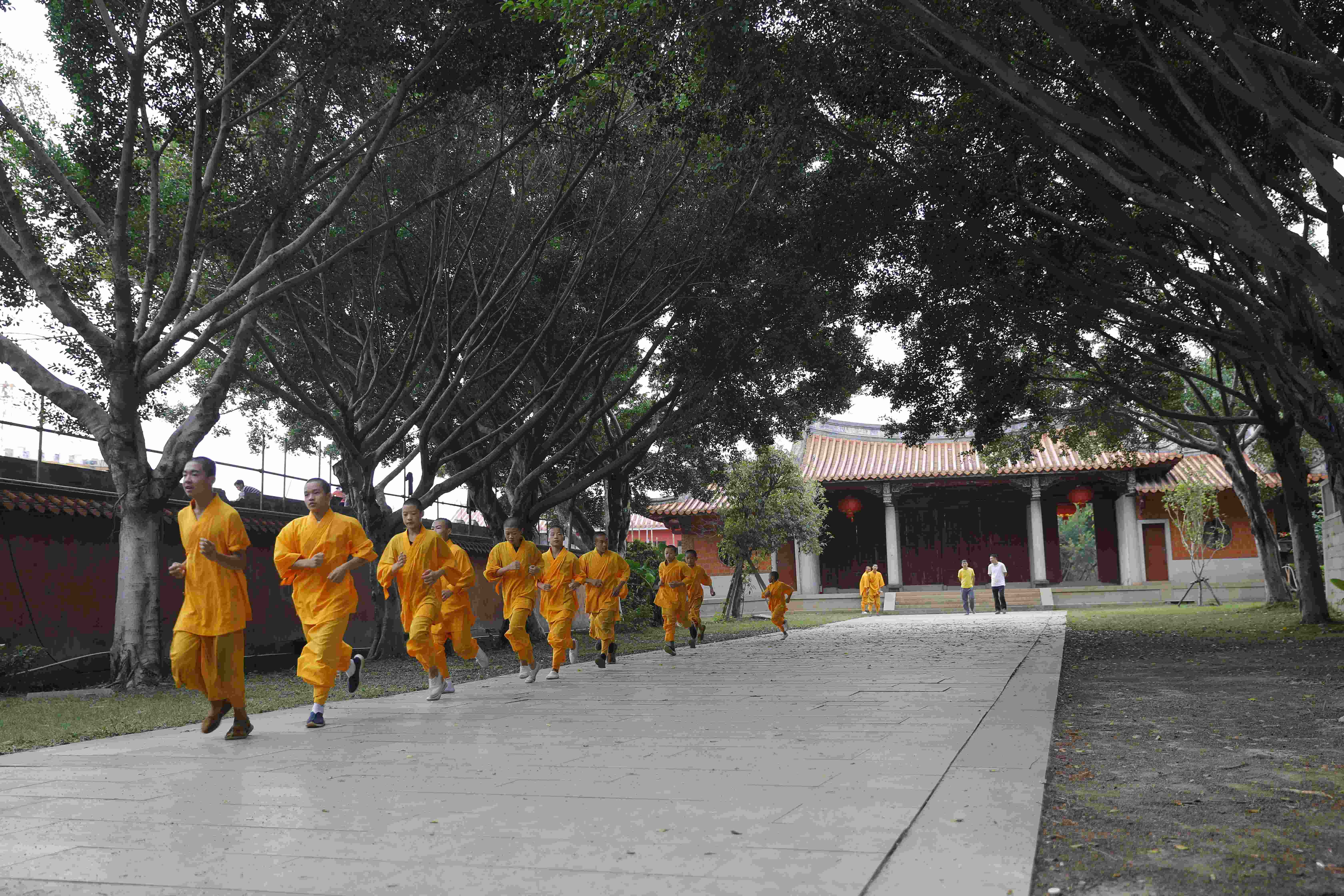
Pupils at Southern Shaolin Temple in Quanzhou, China. /CGTN Photo
Pupils at Southern Shaolin Temple in Quanzhou, China. /CGTN Photo
Even Abbott Shi Changding still practices two to three hours a day.
A kung fu practitioner since the age of 13, he has been with Southern Shaolin Temple since it was rebuilt. He says his mission is to help the temple gain recognition.
This has meant attending conferences, giving media interviews and generally doing public relations work for the temple.
“As the abbot of the temple, part of my job is to make more people know about Shaolin,” he told CGTN on a recent visit.
In the process however, he has attracted criticism from some who argue a monk’s duty is at the temple, studying scripture.
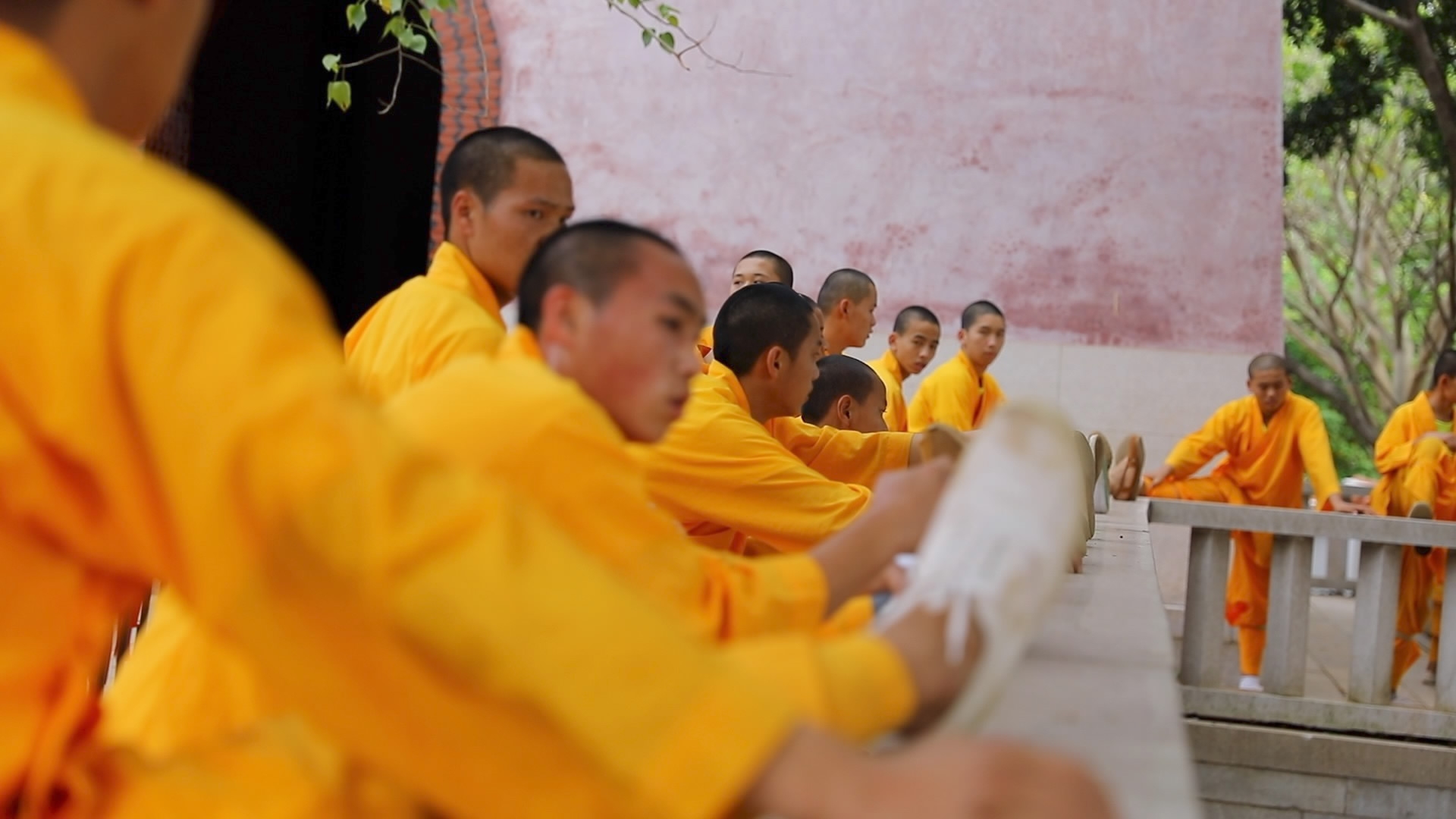
Pupils at Southern Shaolin Temple in Quanzhou, China. /CGTN Photo
Pupils at Southern Shaolin Temple in Quanzhou, China. /CGTN Photo
“When I take part in discussions and meetings all over the country, people ask: why isn’t this Buddhist monk at the temple chanting prayers? How come he’s here taking part in these activities?”
But Shi Changding insists: “I have to. Otherwise, no one will know who we are and what we’re doing."
“We can’t separate Buddhism from society and from life. If you want to carry it out to the community and to the world, you have to leave (the temple).”
A pop culture boost
One thing that has helped is kung fu movies, starting with Chang Hsin Yen’s 1982 film “The Shaolin Temple,” starring Li Lianjie, or Jet Li as he is better known in the West.
“The Shaolin Temple movies in the 1980s, when they came out, were hugely popular, causing kung fu fever around the world. They contributed hugely to making more people familiar with Shaolin,” according to Shi Changding.

A poster for the 1994 film "The New Legend of Shaolin." /VCG Photo
A poster for the 1994 film "The New Legend of Shaolin." /VCG Photo
Nowadays, aspiring kung fu masters come from as far as Canada or Belgium to learn Southern Shaolin martial arts at the temple. Anyone can study kung fu at the temple as there is no prerequisite to be a monk.
At the same time, Southern Shaolin is a Buddhist temple like any other in China: amid the Bodhi trees and imposing statues, monks study the teachings of Buddha and ordinary people go to pray and burn incense.
The temple is still undergoing renovation and expansion work but once completed, it is expected to become one of the largest temples in China, covering some 400 “mu” (26.7 hectares).
Still, on cool mornings when the only sound on the hill is that of dozens of monks moving in unison and punching the air, it is easy to feel transported to the time when warrior monks battled pirates.
1681km

SITEMAP
Copyright © 2018 CGTN. Beijing ICP prepared NO.16065310-3
Copyright © 2018 CGTN. Beijing ICP prepared NO.16065310-3